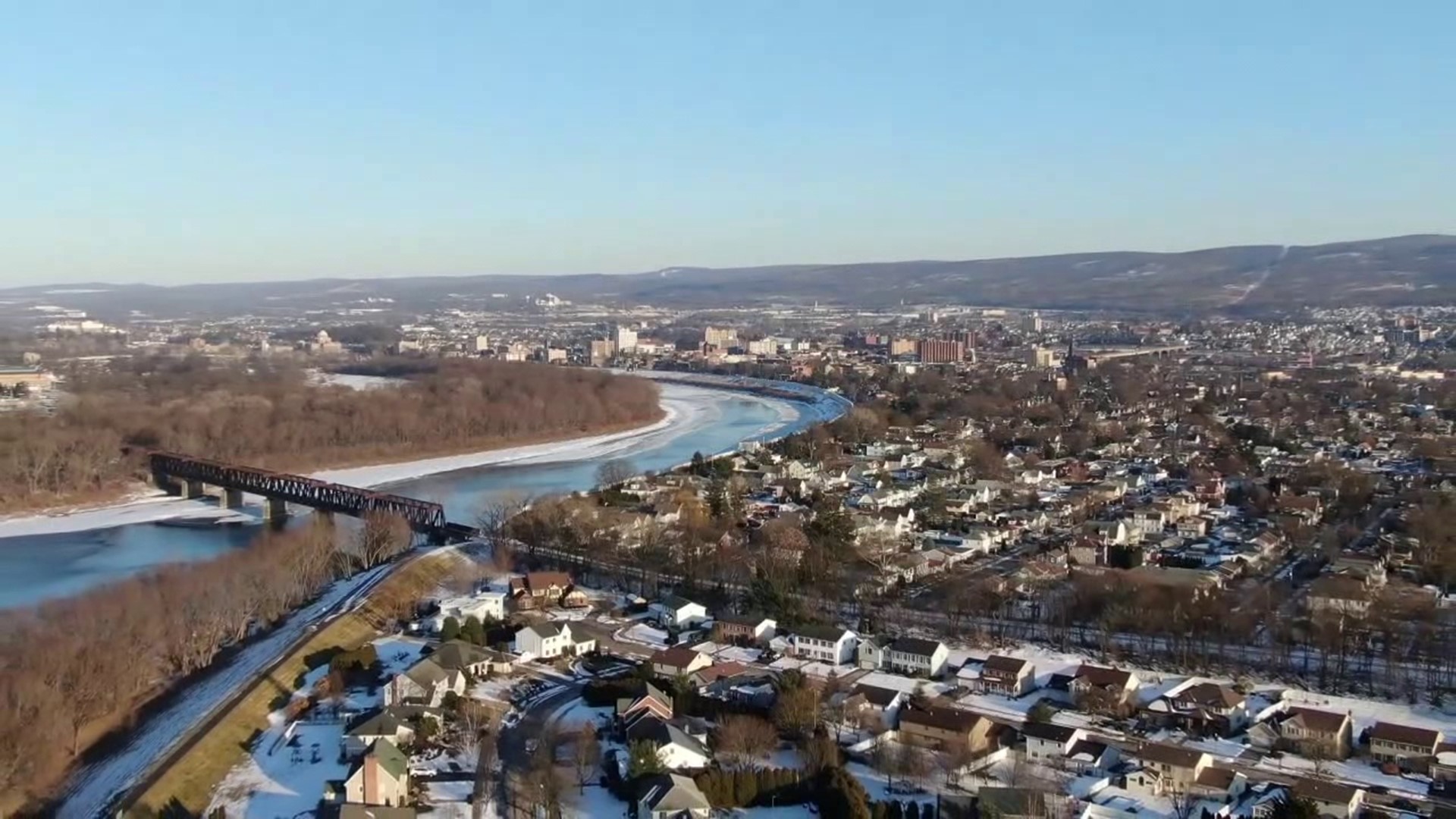La Nina is back!
Throughout the fall of 2010, a transition from an El Nino occasion to a La Nina occasion occurred, with a moderate to strong La Nina creating throughout the colder time of year of 2010-2011. As we headed into the cold weather months of 2011-2012…La Nina conditions got back to the central Pacific Sea for the second straight winter. The Climate Prediction Center (CPC) has issued the authority winter outlook for the United States. So what will this mean for our area of Northern Indiana, Southwest Lower Michigan and Northwest Ohio? Peruse underneath for more data…
What is La Nina?
- La Nina refers to the occasional cooling of sea surface temperatures in the focal and east-focal tropical Pacific. Normally, La Nina events happen each 3 to 5 years or somewhere in the vicinity, yet on occasion can happen over successive years. La Nina represents the cool phase of the El Nino/Southern Oscillation (ENSO) cycle. La Nina debilitated last spring into late-spring yet started to show signs of strengthening again late this summer as bad temperature anomalies got back to the central Pacific Sea. Several PC models forecast this cooling to go on through the colder time of year and therefore the latest authority forecast from the Climate Prediction Center (CPC) calls for this La Nina to strengthen and persist into the late-winter of 2012.
- During a La Nina occasion, the changes in Pacific Sea temperatures influence the patterns of tropical precipitation from Indonesia toward the west coast of South America. These changes in tropical precipitation patterns influence atmospheric conditions all through the world. These effects are usually strongest throughout the cold weather months when the fly stream is strongest over the United States. As shown in the picture beneath, La Nina episodes in the cold weather months highlight a wave-like fly stream across the United States and Canada, which causes colder and stormier than normal conditions across the North, and hotter and less stormier conditions across the south. Historically for this piece of the Midwest, fall tends to be hotter and drier than ordinary while winters will generally be wetter than typical. Nonetheless, there are also numerous other confounded factors in the atmosphere and oceans that can also affect our weather conditions.
- The images beneath show temperature, precipitation and snowfall anomalies across the mainland United States (CONUS) based on past La Nina events tracing all the way back to 1950. Each picture is comprised of a peculiarity map on the left side and a recurrence map on the right. The inconsistency map shows the registered oddity based on every past occasion. The recurrence map on the right indicates how frequently these anomalies happened. A high recurrence leads to a higher certainty that the inconsistency might happen once more. The maps are additionally poor somewhere near composite on the top, trends in the center, and a mix of composite and trends on the base. A more nitty gritty explanation of these maps can be found at here. The images on the left are for the period December-February (meteorological winter), and the images on the extreme right are for the January-Walk period (late winter into late-winter). For our area, you can see that the temperature anomalies are close to nothing, yet the negative anomalies are just to our northwest. This is an impression of some La Nina years being hotter than ordinary and others being colder than typical. Precipitation and snowfall anomalies for our area become wetter as we progress through the colder time of year into the late-winter, with a nice recurrence of event. Keep in mind, these maps are based on past La Nina events alone and don’t consider different peculiarities which can work with or against a La Nina example and effect our climate. Several the more understand peculiarities are described in the accompanying sections.
Arctic and North Atlantic Oscillations
Scientific research throughout recent years has tracked down correlations between conditions in the Arctic and North Atlantic Sea areas and climate across the CONUS. These conditions have been named the Arctic Oscillation (AO) and the North Atlantic Oscillation (NAO).
The AO is a reference to changing atmospheric pressure patterns in the high latitudes of the Arctic locale. At the point when there is relatively high pressure over the northern polar locale and relatively low pressure in the center latitudes, the AO is considered to be in a negative phase. At the point when this example is reversed, being in a positive phase is known. During the negative phase, cold air by and large plunges southward into the focal and eastern United States as the Jetstream buckles and high pressure over the polar locale helps push the freezing polar air southward. In the positive phase, the winds associated with the polar fly stream are by and large zonal and restricted toward the northern latitudes. This essentially “bottles up” the freezing air in the Polar Regions. The AO phases should be visible in the graph underneath.
The NAO is similar to the AO, yet is a measure of the distinction in atmospheric sea level pressure between the Icelandic low (also known as the polar low) and the Azores high (also known as the subtropical high). The positive phase of the NAO indicates a stronger than ordinary Azores high and a stronger than typical Icelandic low. This results in an increased pressure slope between the two. The negative phase of the NAO indicates a more vulnerable Azores high and more fragile Icelandic low, which results in a more vulnerable pressure slope between the two pressure centers. The positive phase is by and large associated with better than expected temperatures in the eastern CONUS while the negative phase is associated with less than ideal temperatures. The NAO phases should be visible in the chart underneath.
While the AO and NAO essentially affect the climate across the CONUS, they must be forecast with reasonable skill out to around two weeks. Therefore, while La Nina is a persistent, relatively long haul design, the AO and NAO fluctuations are on a lot smaller time scale and their effects can upgrade or suppress conditions normally associated with a La Nina. At the point when the AO and NAO are in their negative phases, they can give cold air across the CONUS. On the off chance that these phases concur with a strong storm system produced in a La Nina design, a significant snow storm could be the result. Notwithstanding, on the off chance that the AO and NAO are in a positive phase when a storm system develops, there could be less virus air and possibly more fluid precipitation. These convoluted interactions are just a small piece of what makes forecasting winter climate in the focal and eastern United States so troublesome.
The images underneath show temperature and precipitation anomalies regularly associated with the AO positive phase (AO+), unbiased phase (AON), and negative phase (AO-) across the CONUS. The images on the left side are for the December-February period and the images on the right show the January-Walk period. You can see that when the AO is positive, a large piece of the focal and eastern CONUS experiences positive temperature anomalies. At the point when the AO is negative, large numbers of these same areas have negative temperature anomalies. Impacts on precipitation are not as widespread as temperatures, yet there is a pattern toward less precipitation in a negative AO design in areas where La Nina tends to deliver above typical precipitation, specifically in the Ohio and Lower Mississippi Valley regions. These opposite patterns assist with powering the vulnerability while forecasting winter precipitation. Be that as it may, La Nina systems are usually exceptionally strong and moisture rich and will generally defeat the negative precipitation anomalies associated with the negative AO in our space.
Climate Prediction Center’s Outlook
The experts at the Climate Prediction Center (CPC) give temperature and precipitation outlooks on week after week, month to month, and seasonal timescales using informational collections, PC models, and other research tools. Presented beneath are the ongoing outlooks for this colder time of year (December, January, and February). The ongoing winter outlook shows equivalent opportunity for typical or above or underneath ordinary temperatures as well as increased chances for above ordinary precipitation for Northern Indiana, Southwest Lower Michigan and Northwest Ohio. It is critical to recollect that these maps show probabilities for these conditions to happen and don’t infer conviction. Also, the precipitation map is not a sign of snow chances or amounts, yet simply precipitation overall. As explained in previous sections, assuming that the AO or NAO become positive for a significant stretch, that could prompt a milder winter in the northern CONUS. In any case, Assuming they become negative for a significant stretch, that could mean a freezing winter for the north. These indices have been negative for the last several winters and some research suggest these indices might stay in generally speaking negative or positive phases for a considerable length of time. We must also recall that storm improvement and tracks through the Midwest are basic in the colder time of year for figuring out where the heaviest precipitation will happen and in what structure it will fall. La Nina tends to shift storm tracks somewhat further south contrasted with typical, with the Ohio Stream Valley district being a leaned toward region for winter storms. This places our district on the extremely northern edge of many winter storms.
Local Study
In the wake of seeing research based on a public scale and the CPC’s colder time of year outlook, a local research study was finished to take a gander at what past La Nina events meant for the local region. Since 1950, there have been 14 archived La Nina episodes. Because of a restricted dataset and local climate inconstancy, these results alone can’t foresee precisely exact thing will occur during the ongoing La Nina episode, however taking note of the trends is interesting. Month to month normal temperatures, precipitation, and snowfall information for every episode was incorporated for Fort Wayne and South Bend. The graphs that follow show the takeoff from typical of all the La Nina episodes joined.
- As a general rule, Fort Wayne was hotter than typical for the entire months with the exception of Spring, May, and November which were colder than ordinary during La Nina episodes. In terms of precipitation, the months of January, February, May, August, and October were wetter than typical while the leftover months were drier than ordinary. Snowfall was underneath typical for the months of January, February, April and October-December and above ordinary in Spring.
- As a rule, South Bend was hotter than typical for the entire months with the exception of February, Walk, and May which were colder than ordinary during La Nina episodes. In terms of precipitation, the months of January, February, April, August, and October were wetter than ordinary while the leftover months were drier than typical. Snowfall was underneath typical for the months of January, February, November, and December and above ordinary in Spring, May and October.
Relevant Topics Search:
- la niña 2022
- la niña 2024
- el niño 2022
- el niño 2023
- el niño 2024
- la niña winter
- what is la niña
- what is el niño
- la niña weather
- la niña effects
- EL Niño, el niño
- la niña winter 2022
- la niña winter 2024
- what causes la niña
- how long does la niña last
- la niña weather pattern 2022
- la niña weather pattern 2024
- difference between el niño and la niña
- difference between el niño and la niña pdf





